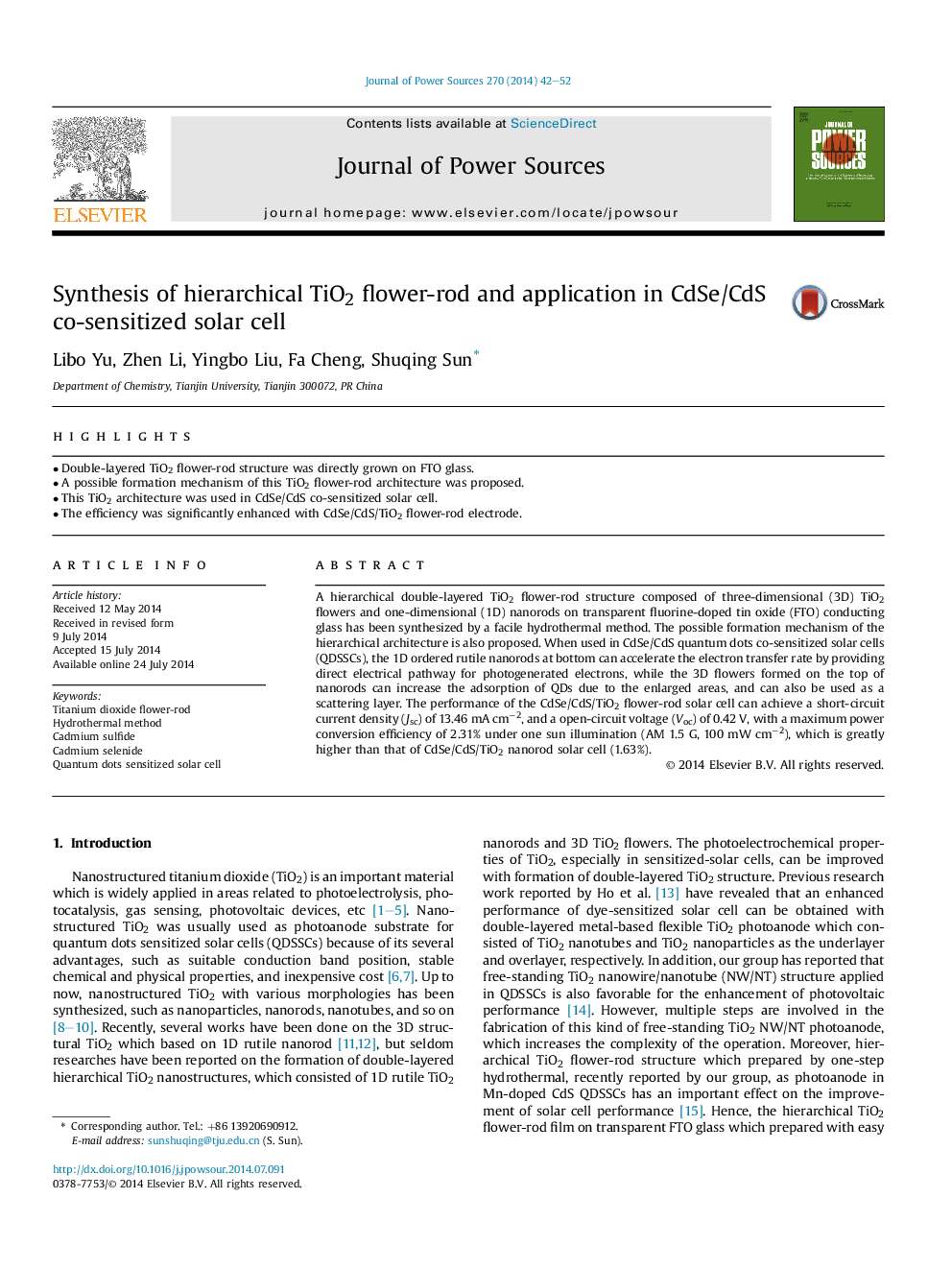| Article ID | Journal | Published Year | Pages | File Type |
|---|---|---|---|---|
| 7736146 | Journal of Power Sources | 2014 | 11 Pages |
Abstract
A hierarchical double-layered TiO2 flower-rod structure composed of three-dimensional (3D) TiO2 flowers and one-dimensional (1D) nanorods on transparent fluorine-doped tin oxide (FTO) conducting glass has been synthesized by a facile hydrothermal method. The possible formation mechanism of the hierarchical architecture is also proposed. When used in CdSe/CdS quantum dots co-sensitized solar cells (QDSSCs), the 1D ordered rutile nanorods at bottom can accelerate the electron transfer rate by providing direct electrical pathway for photogenerated electrons, while the 3D flowers formed on the top of nanorods can increase the adsorption of QDs due to the enlarged areas, and can also be used as a scattering layer. The performance of the CdSe/CdS/TiO2 flower-rod solar cell can achieve a short-circuit current density (Jsc) of 13.46Â mAÂ cmâ2, and a open-circuit voltage (Voc) of 0.42Â V, with a maximum power conversion efficiency of 2.31% under one sun illumination (AM 1.5 G, 100Â mWÂ cmâ2), which is greatly higher than that of CdSe/CdS/TiO2 nanorod solar cell (1.63%).
Related Topics
Physical Sciences and Engineering
Chemistry
Electrochemistry
Authors
Libo Yu, Zhen Li, Yingbo Liu, Fa Cheng, Shuqing Sun,
